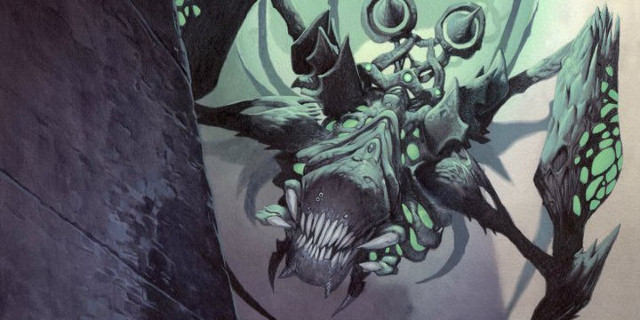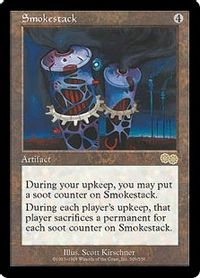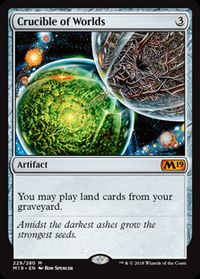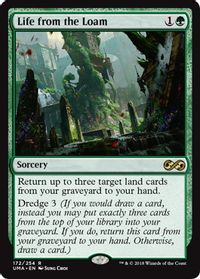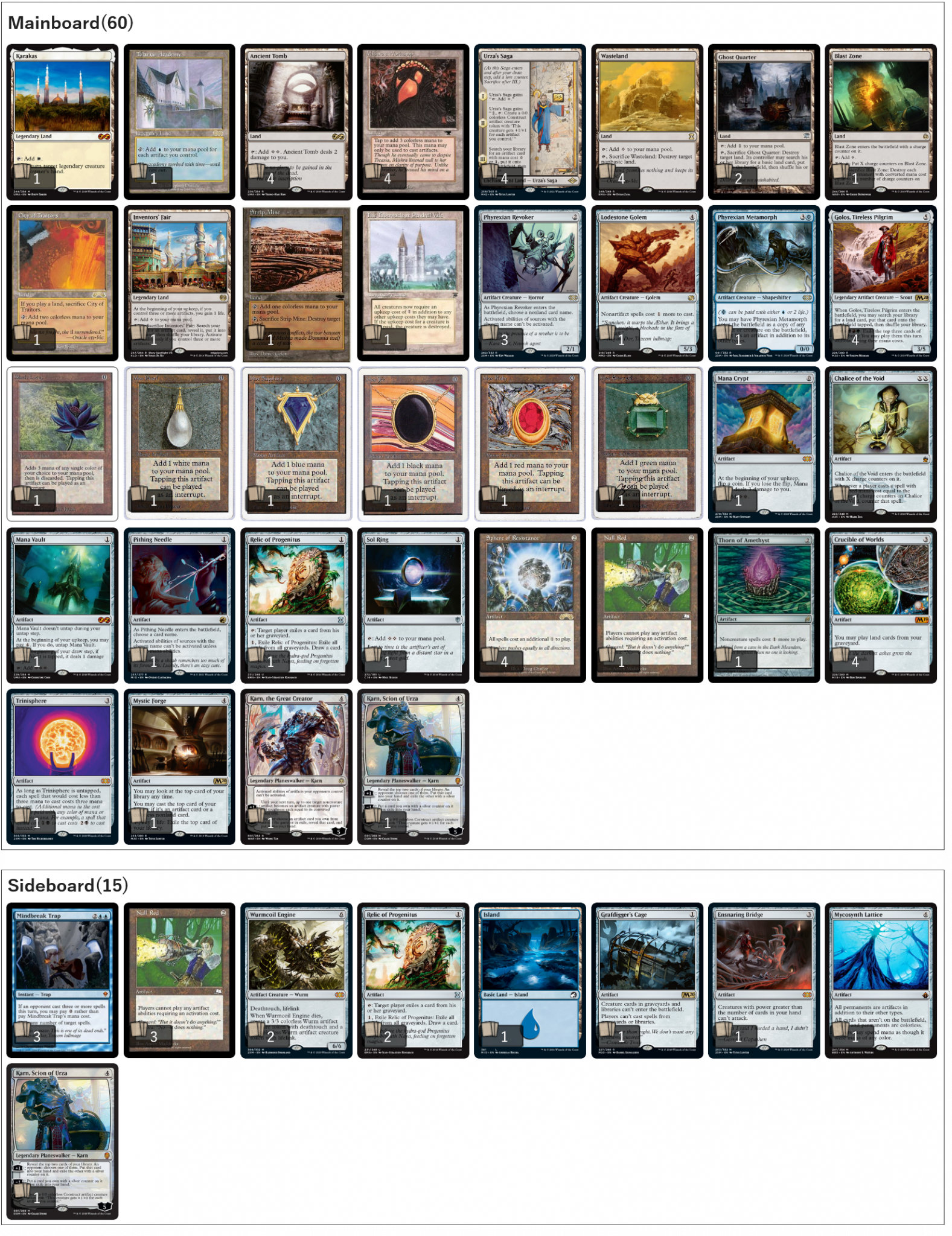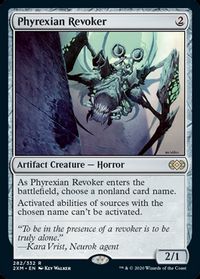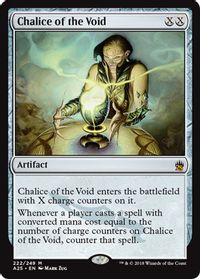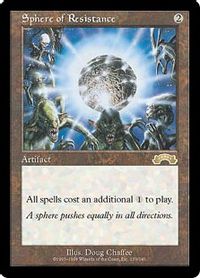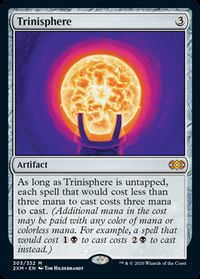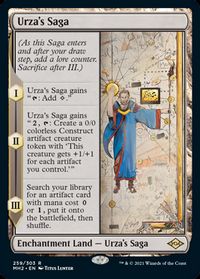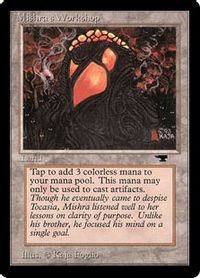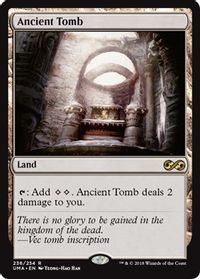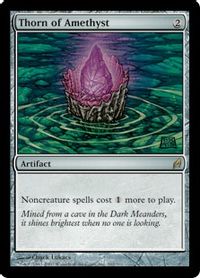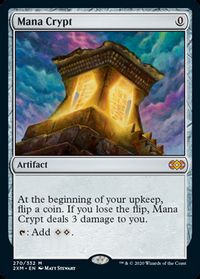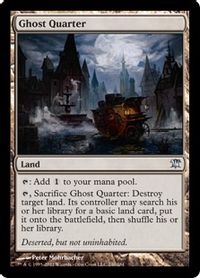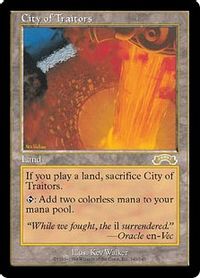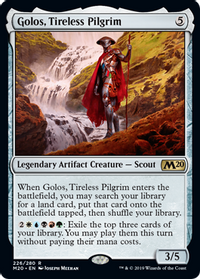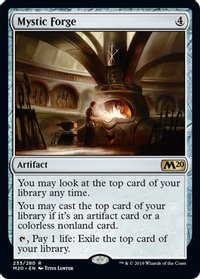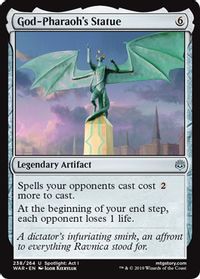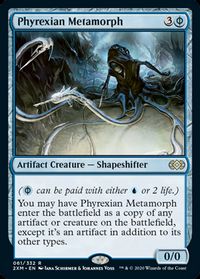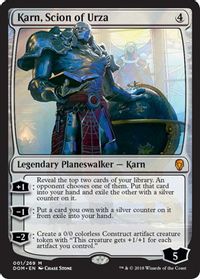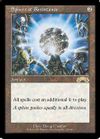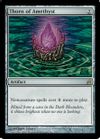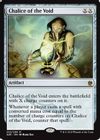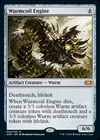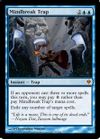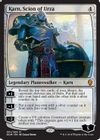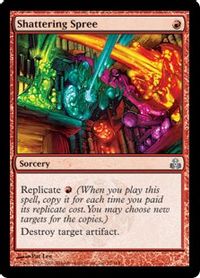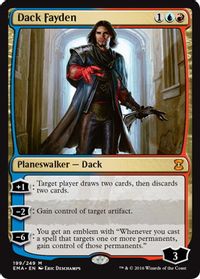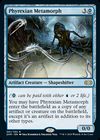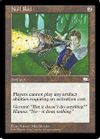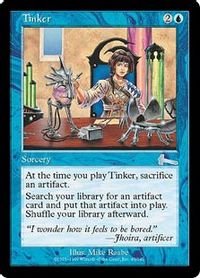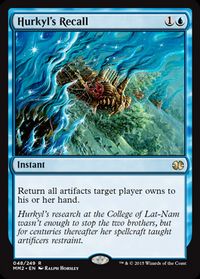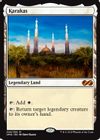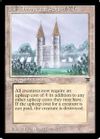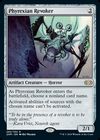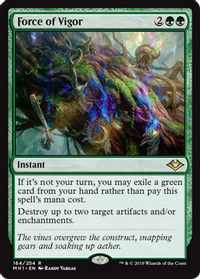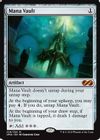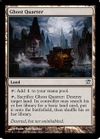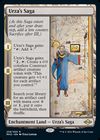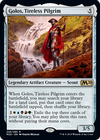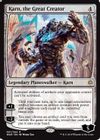Introduction
Hola!
After the end of last season, I started exploring different formats I had played before. One of those formats was Vintage, which I played for a couple of weeks and I can say I enjoyed very much trying the different archetypes.
Vintage has these gameplay patterns that remind me of cube since there are a lot of possible broken interactions you can assemble with all the Moxen around.
However, there is one archetype that was clearly the less appealing to me once I started playing but ended being my favorite one: Golos Stax. It doesn’t play the card 《Smokestack》 anymore but the spirit remains the same!
Some of you might even remember from other articles that I am a big fan of the 《Crucible of Worlds》/《Life from the Loam》 so it made sense for me to at least try the archetype that was playing 4 (!!!) copies of that effect.
Golos Stax
This is my current decklist:
Deck Guide
Overall Plan
Some 《Mishra’s Workshop》 decks in the past have worked as hybrid Aggro/Prison decks where you would leverage pressure to close the game with aggressive creatures like 《Lodestone Golem》 and 《Arcbound Ravager》.
However, this version often plays in a very defensive way where you simply want to control the game until you eventually win. This means our plan in most matchups is to control the game, not to be the aggressor. I’ve lost too many games trying to establish a board instead of disrupting my opponent’s plan.
《Urza’s Saga》
I think 《Urza’s Saga》 is one of the best cards in the whole deck.
《Urza’s Saga》 is so strong in Golos Stax because it is a combination of a mana source, a threat, and card advantage in a deck that by definition tends to lack flexibility. Deciding when to play 《Urza’s Saga》 can be very tricky since it will often delay us a turn, which can be fatal in Vintage.
Ideally, we will disrupt our opponent as much as we can and then we will deploy 《Urza’s Saga》. Construct tokens are surprisingly large in this deck and can even sometimes outpower engines like 《Sphinx of the Steel Wind》 or 《Monastery Mentor》.
Not only 《Urza’s Saga》 is stronger because of the raw size of the tokens, but the tutor aspect is also relevant because 《Urza’s Saga》 will virtually never mean we are behind on mana after chapter Ⅲ, which is a drawback the card has in Legacy or Modern. The ability to grab 《Sol Ring》 to make sure 《Urza’s Saga》 keeps giving mana lets us play the card comfortably even in turn 1 as long as we don’t have anything better to do.
Mana Base
If 《Urza’s Saga》 is powerful, 《Mishra’s Workshop》 is probably the most important card in the whole deck, even if it doesn’t play well with 《Urza’s Saga》 itself. 《Mishra’s Workshop》 makes it so we can cast our more expensive cards like 《Golos, Tireless Pilgrim》 without needing that many mana sources. 《Ancient Tomb》 is also a powerful land that will let us be ahead on mana even if the cost is often very high.
What I want to talk about though, is sequencing, as I’ve found sequencing these lands very tricky. 《Mishra’s Workshop》 is, generally speaking, a stronger card than 《Ancient Tomb》, but there are some hands that actually change that.
For Example
This is a hand where 《Ancient Tomb》 is worth more than 《Mishra’s Workshop》 since we don’t really have any expensive spells in our hands and we have two 《Urza’s Saga》 that will likely be enough to win the game if we don’t die before. In this case, I like to lead with 《Mishra’s Workshop》 so I keep both 《Ancient Tomb》 against a 《Wasteland》 deck.
If we had 《Golos, Tireless Pilgrim》 instead of 《Crucible of Worlds》, I would prefer leading with 《Ancient Tomb》. That way, even if we run into a 《Wasteland》, we can cast 《Golos, Tireless Pilgrim》 with two lands. I don’t think the 2 damage is very relevant in this particular scenario. Speaking of which…
Between 《Mana Crypt》, 《Mana Vault》, and 《Ancient Tomb》, losing to our own cards is a real possibility, especially with 《Mana Crypt》, since we only have one way of getting rid of it in form of 《Karn, the Great Creator》.
Depending on the situation, it can be correct to simply delay our plans a little bit if that involves not playing the 《Mana Crypt》 until we have something that can actually close the game. I have considered sideboarding out 《Mana Crypt》 in some matchups for that reason, but ultimately I think how well it plays with 《Urza’s Saga》 makes it so I still want to have it in my deck.
Unusual Choices
Most of the lands in the deck like 《Wasteland》 or 《The Tabernacle at Pendrell Vale》 are self-explanatory.
However, I’ve made some adjustments to the mana base and I’ve been very happy with the changes. The lands that I replaced 《Ghost Quarter》, which even with 《Crucible of Worlds》 were disappointing since most decks are playing a non-zero number of basics in both main deck and sideboard.
The mirror match is the only matchup where I found 《Ghost Quarter》 good enough, particularly on game 1, where the deck doesn’t have basics, but past that, the card has been mediocre to me.
《City of Traitors》, an old staple from this kind of deck, has actually been pretty strong and I’m considering playing the second copy. As you can probably guess before I even say it, it does play very well with 《Urza’s Saga》. It also helps with those games where you are facing some pressure and don’t want to take too much damage from your 《Ancient Tomb》.
《Blast Zone》 was suggested to me by Andrea Mengucci and while it has been a little bit underwhelming in some situations, it has also won me games where no other land would ever save me. The main idea behind 《Blast Zone》 is to answer 《Pithing Needle》, which is one of the best ways to answer 《Urza’s Saga》. 《Blast Zone》 has a similar floor to 《Ghost Quarter》 being a land that only adds one mana, but I think it adds another angle of defense that I’ve been liking.
Deck Core
Every part of the main deck core headed in one way or another to disrupt our opponent. The disruptive artifacts like 《Sphere of Resistance》 are the core of our game plan. Some of them like 《Chalice of the Void》 are restricted because of how good they are, but we have enough to often start a game with one of those in our hands.
《Phyrexian Revoker》 shows up in the decklist because it can name opposing Moxen, which makes it often be a 《Strip Mine》 that attacks for two. I’m not very happy with 《Phyrexian Revoker》 since it is awkward in many situations, but the 2/1 body is actually quite relevant since it can even deal the full 20 damage if our prison lock is strong enough.
《Crucible of Worlds》 is our best way to generate card advantage. Not only it combos with 《Wasteland》/《Strip Mine》 to disrupt our opponent’s plan, but it will also invalidate their own 《Wasteland》 effects. It will also pair up with 《Urza’s Saga》 to grind efficiently against fair decks.
《Golos, Tireless Pilgrim》 is our toolbox card. Every situation will call for a different Golos Target, but when in doubt, grab 《Urza’s Saga》, since it will turn 《Golos, Tireless Pilgrim》 into a massive threat by itself. Remember that you can also grab 《Karakas》 if you have another copy and expect your opponent to be heavy on removal spells.
Flex Slot Choices
Some of the slots in the deck are crystal clear, like 《Karn, the Great Creator》, but the last slots are often different in each decklist.
《Mystic Forge》 is a card I like to draw. I rarely tutor for it with 《Inventors’ Fair》, but it is a serviceable 5th 《Crucible of Worlds》.
《God-Pharaoh’s Statue》 has been underwhelming to me. It is a staple that can win some games on the spot, but I’ve found those games to be the ones where my deck was already good enough to often win. On the other hand, this 6 -drop was not affecting the board in the situations where I was behind on tempo. I decided to cut it from my deck and I have been happy about it.
《Phyrexian Metamorph》 has been, on the other hand, acceptable. It is rarely dead since the floor is copying whatever our opponent is doing. The reason to play 《Phyrexian Metamorph》 is 《Tinker》, where if they get 《Sphinx of the Steel Wind》 or 《Blightsteel Colossus》 we often lose to it on the spot, but 《Phyrexian Metamorph》 gives us an answer we can tutor for with 《Inventors’ Fair》 that is not that embarrasing when we naturally draw it.
My last card is 《Karn, Scion of Urza》. Karn, like 《Urza’s Saga》, also makes it so 《Ancient Tomb》 can be better than 《Mishra’s Workshop》. 《Karn, Scion of Urza》 is more or less our 《Urza’s Saga》 number 5, but in certain situations, it can also work well as a development card if we are low in resources and cast it with something like a 《Black Lotus》.
Sideboarding and Matchups
Sideboarding with Golos Stax is relatively easy, as our options as mono-colored decks are very limited.
Mirror
Playing first is obviously very strong the mirror. Other than that, the mirror is about mana advantage and Construct advantage. If one player can’t manascrew the other, whoever resolves a full 《Urza’s Saga》 will likely win, since that player can also get 《Pithing Needle》 and name 《Urza’s Saga》 so the opponent can’t get any tokens.
For that reason, consider holding the 《Wasteland》 effects if you think your opponent has enough mana so you can answer their 《Urza’s Saga》.

vs. Mirror
Fair Blue
The most common Fair Blue deck is Jeskai, and their hate card is 《Shattering Spree》. They also run 《Dack Fayden》 which is a beating so that should be the default naming with 《Phyrexian Revoker》 as long as your opponent is not visibly manascrewed.

vs. Fair Blue
Tinker
《Tinker》‘s best card against us 《Hurkyl’s Recall》. Our best answer to it other than a 《Chalice of the Void》 for two is 《Mindbreak Trap》. 《Urza’s Saga》 fetching 《Black Lotus》 let us hard cast it and it is often correct to do so if we are ahead.

vs. Tinker
Paradoxical Outcome
《Null Rod》 is our best bet since it will often make them unable to even cast the dreaded 《Hurkyl’s Recall》.

vs. Paradoxical Outcome
Fair 《Force of Vigor》 Decks (Sultai, Temur, 4 Color)
《Force of Vigor》 is their best card and it is very hard to win through it. Our weapon to accomplish that is 《Wurmcoil Engine》, but keep in mind they also play 《Oko, Thief of Crowns》, and sometimes even 《Dack Fayden》.

vs. Fair Decks
Thanks for reading and see you in the tables!


